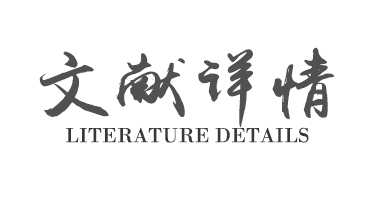资源类型:
期刊
Pubmed体系:
Journal Article
文章类型:
论著
机构:
[1]Department of Emergency, The First Affiliated Hospital of Guangzhou University of Chinese Medicine, Guangzhou, Guangdong 510405, China.
深圳市中医院
深圳医学信息中心
[2]The First Clinical Medical School, Guangzhou University of Chinese Medicine, Guangzhou, Guangdong 510405, China.
深圳市中医院
深圳医学信息中心
[3]Department of Critical Care Medicine, The First Affiliated Hospital of Guangzhou University of Chinese Medicine, Guangzhou, Guangdong 510405, China.
深圳市中医院
深圳医学信息中心
摘要:
Heat stroke (HS) is a potentially fatal acute condition caused by an interplay of complex events including inflammation, endothelial injury, and coagulation abnormalities that make its pharmacological treatment a challenging problem. The traditional Chinese medicine Xuebijing injection (XBJ) has been shown to reduce inflammatory responses and prevent organ injuries in HS-induced mice. However, the underlying mechanism of XBJ in HS-induced brain injury remains unclear. In this study, HS-induced rat models and cell models were established to elucidate the effects and underlying mechanisms of XBJ injection on HS-induced brain injury in vivo and in vitro. The results revealed that XBJ injection improved the survival outcome of HS rats and attenuated HS-induced brain injury in a concentration-dependent manner. Subsequently, the reduction in viability and proliferation of neurons induced by HS were reversed by XBJ treatment, while the HS-induced increased ROS levels and neuron death were also inhibited by XBJ injection. Mechanistically, HS activated PARP-1/AIF signaling in vitro and in vivo, inducing the translocation of AIF from the cytoplasm to the nucleus, leading to PARP-1-dependent cell death of neurons. Additionally, we compared XBJ injection effects in young and old age rats. Results showed that XBJ also provided protective effects in HS-induced brain injury in aging rats; however, the treatment efficacy of XBJ injection at the same concentration was more significant in the young age rats. In conclusion, XBJ injection attenuates HS-induced brain injury by inhibiting oxidative stress and Parthanatos via the PARP-1/AIF signaling, which might provide a novel therapeutic strategy for HS treatment.© 2023 The Authors. Published by American Chemical Society.
基金:
National Natural Science
Foundation of China (No. 82104572) and the Guangzhou
Science and Technology Project (Nos. 202102080465 and
202201020339).
PubmedID:
37744847
中科院(CAS)分区:
出版当年[2022]版:
大类
|
3 区
化学
小类
|
3 区
化学:综合
最新[2025]版:
大类
|
3 区
化学
小类
|
3 区
化学:综合
第一作者:
Wang Lin
第一作者机构:
[1]Department of Emergency, The First Affiliated Hospital of Guangzhou University of Chinese Medicine, Guangzhou, Guangdong 510405, China.
共同第一作者:
Ye Boxin
通讯作者:
Wen Minyong;Li Hongbo
推荐引用方式(GB/T 7714):
Wang Lin,Ye Boxin,Liu Yongrui,et al.Xuebijing Injection Attenuates Heat Stroke-Induced Brain Injury through Oxidative Stress Blockage and Parthanatos Modulation via PARP-1/AIF Signaling[J].ACS omega.2023,8(37):33392-33402.doi:10.1021/acsomega.3c03084.
APA:
Wang Lin,Ye Boxin,Liu Yongrui,Li Jun,Li Chunhe...&Li Hongbo.(2023).Xuebijing Injection Attenuates Heat Stroke-Induced Brain Injury through Oxidative Stress Blockage and Parthanatos Modulation via PARP-1/AIF Signaling.ACS omega,8,(37)
MLA:
Wang Lin,et al."Xuebijing Injection Attenuates Heat Stroke-Induced Brain Injury through Oxidative Stress Blockage and Parthanatos Modulation via PARP-1/AIF Signaling".ACS omega 8..37(2023):33392-33402

